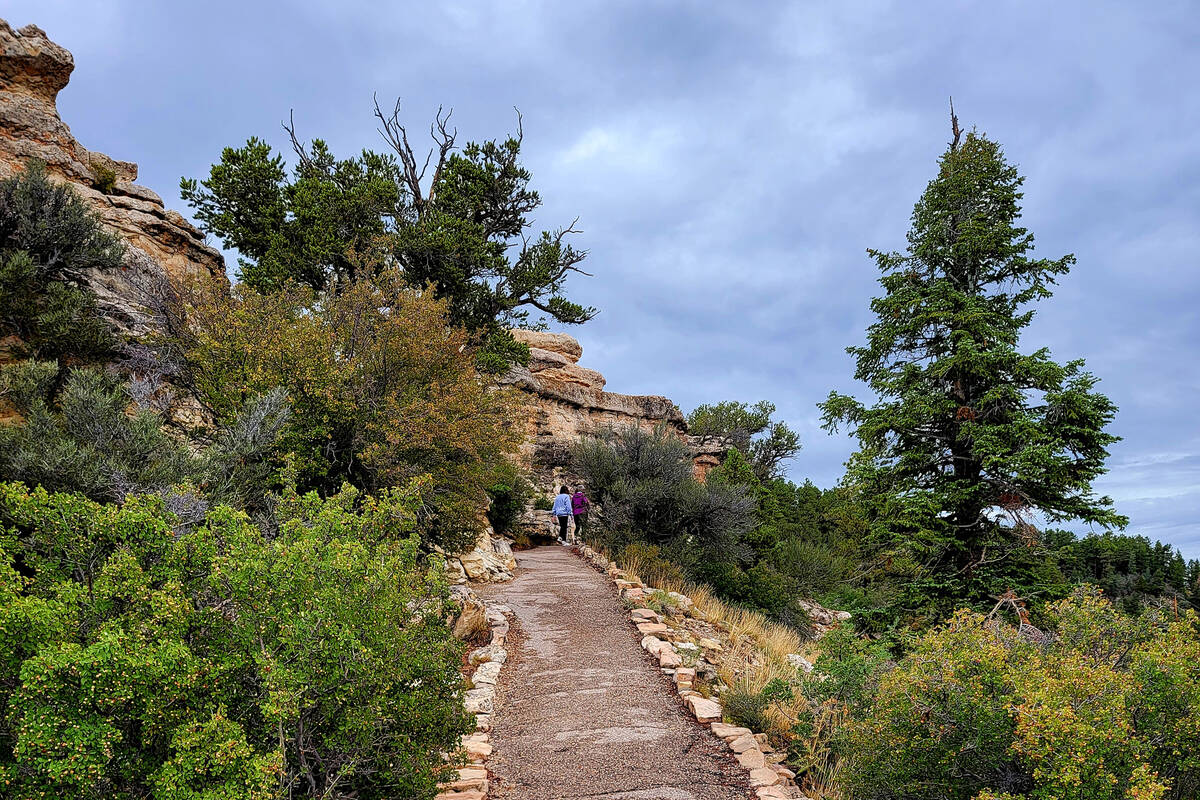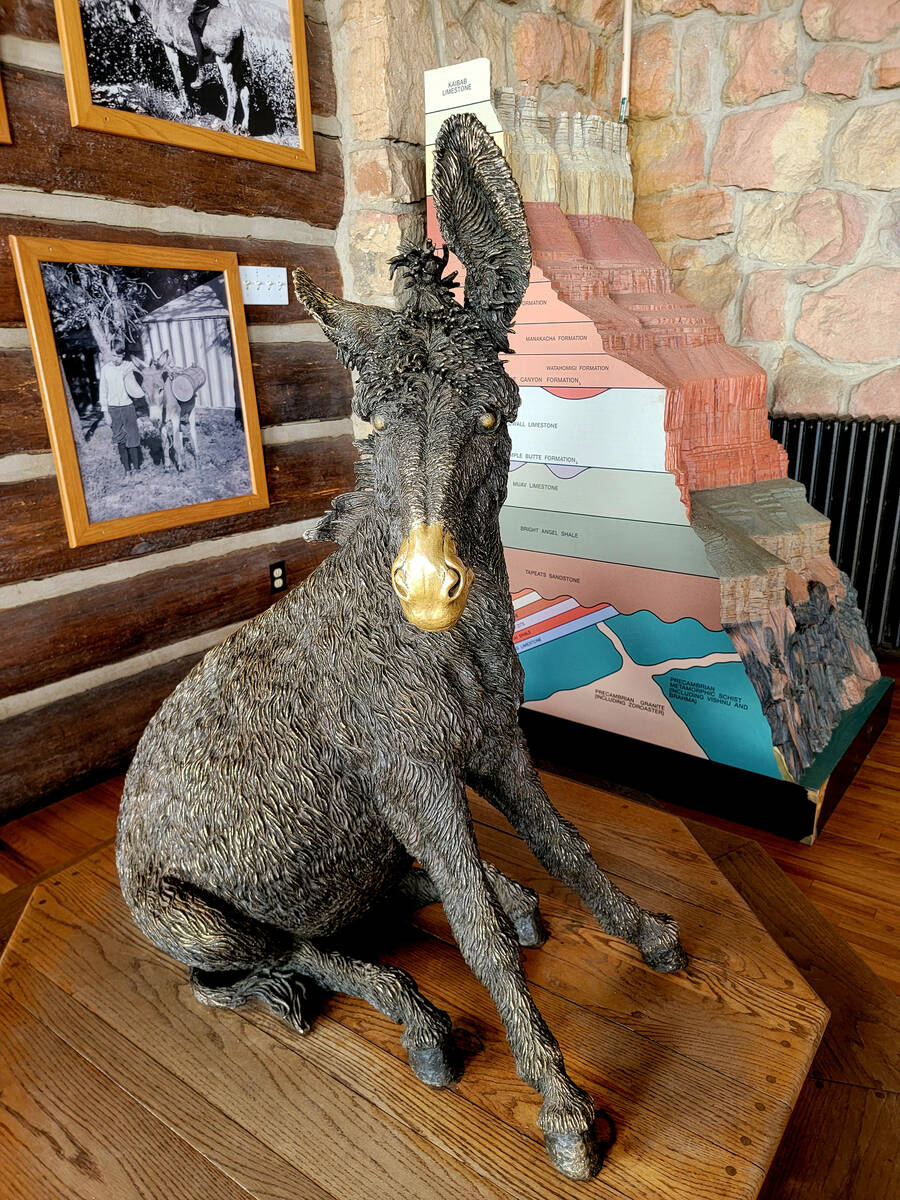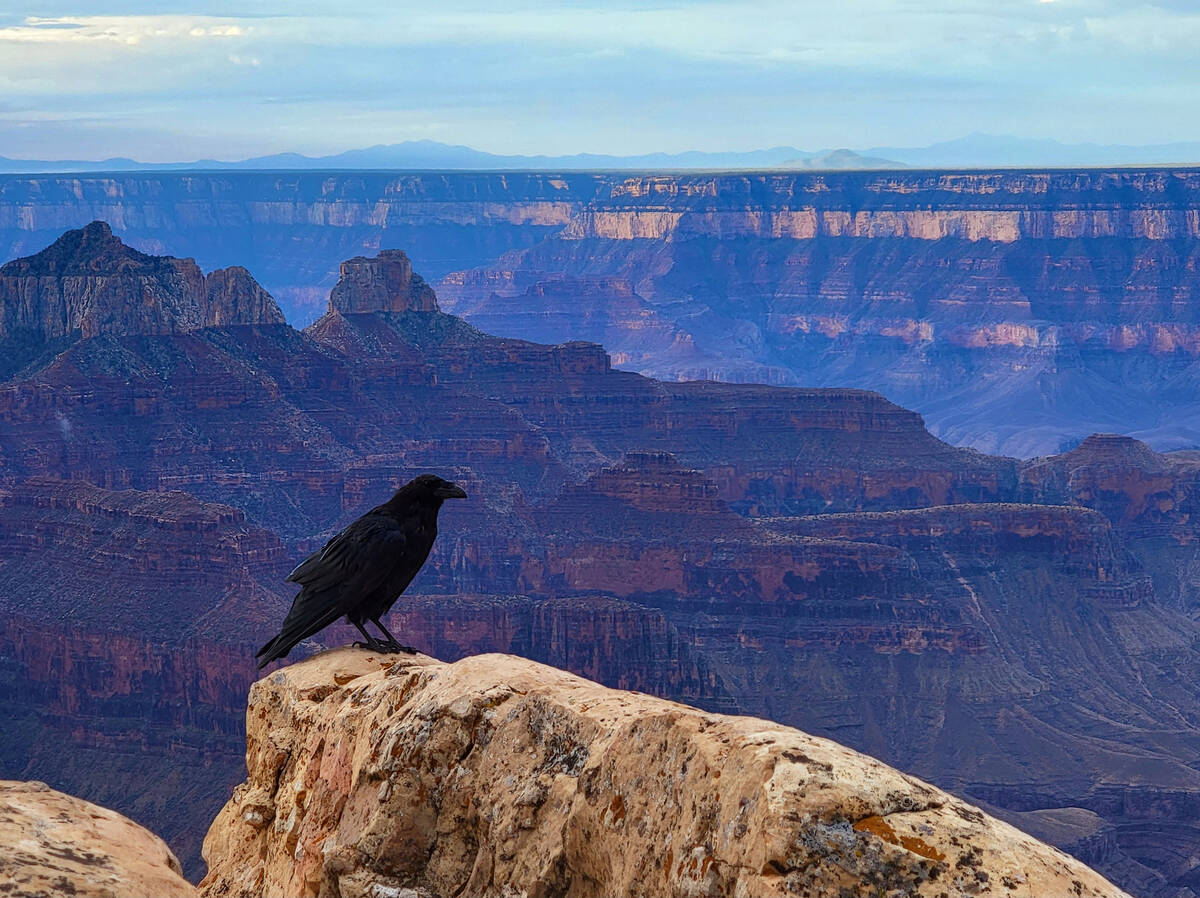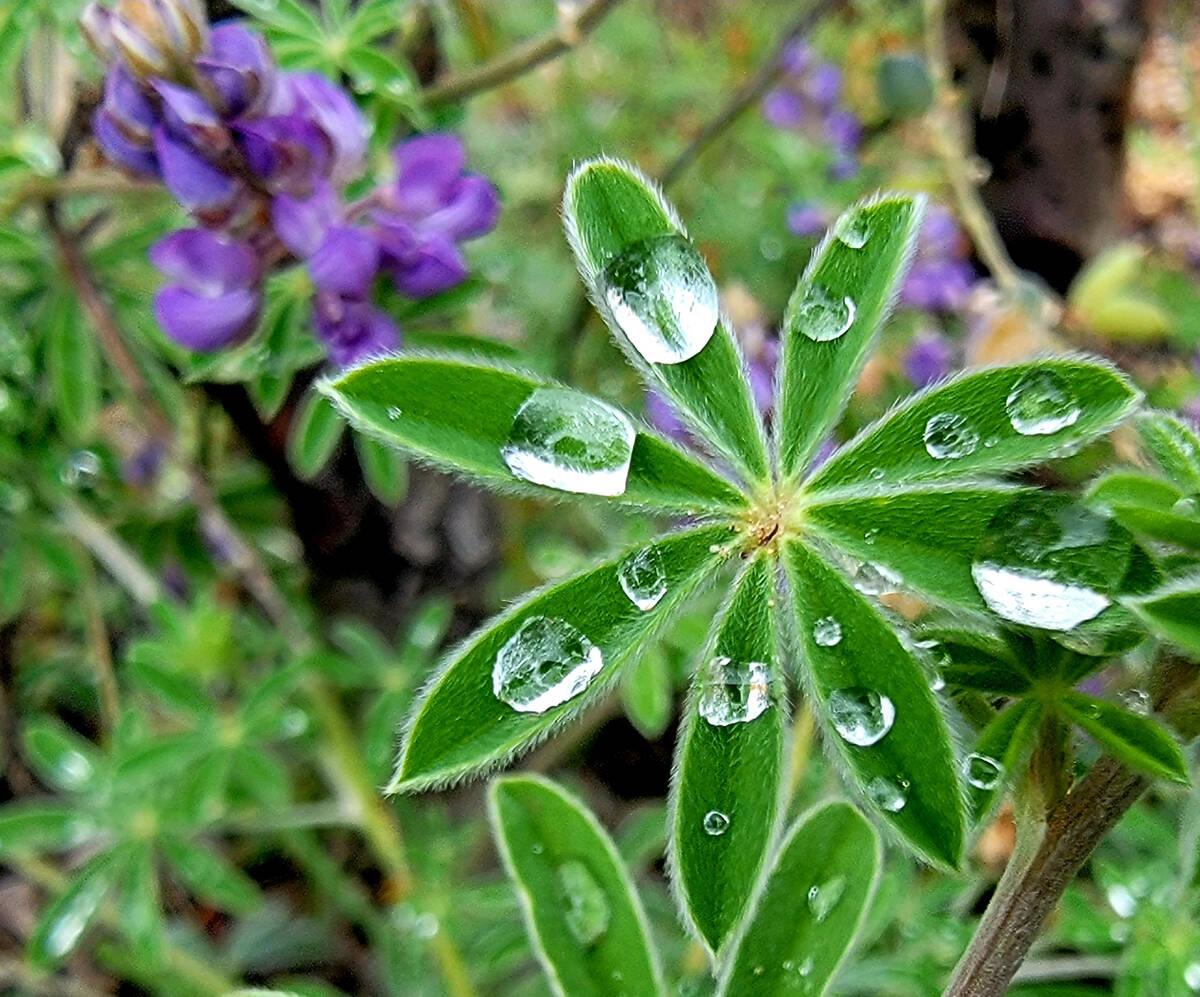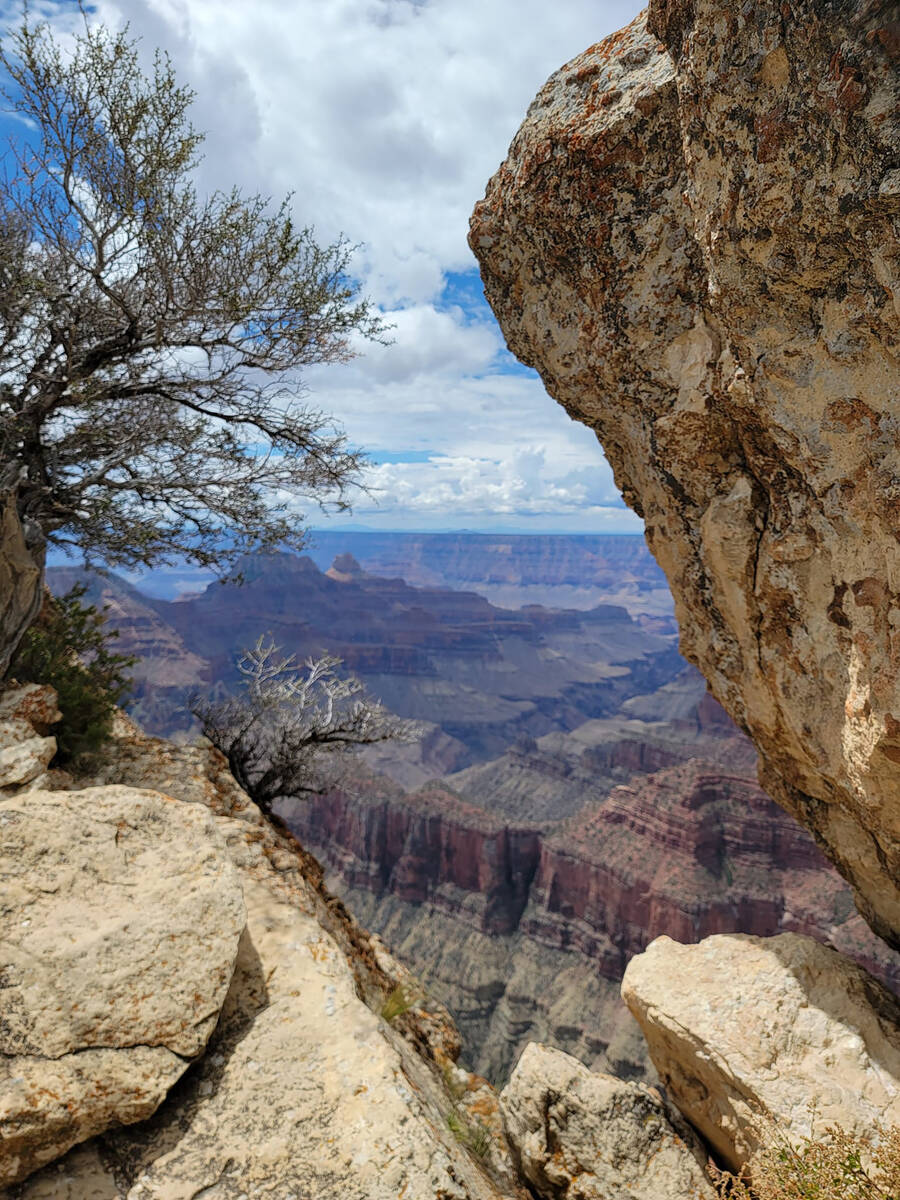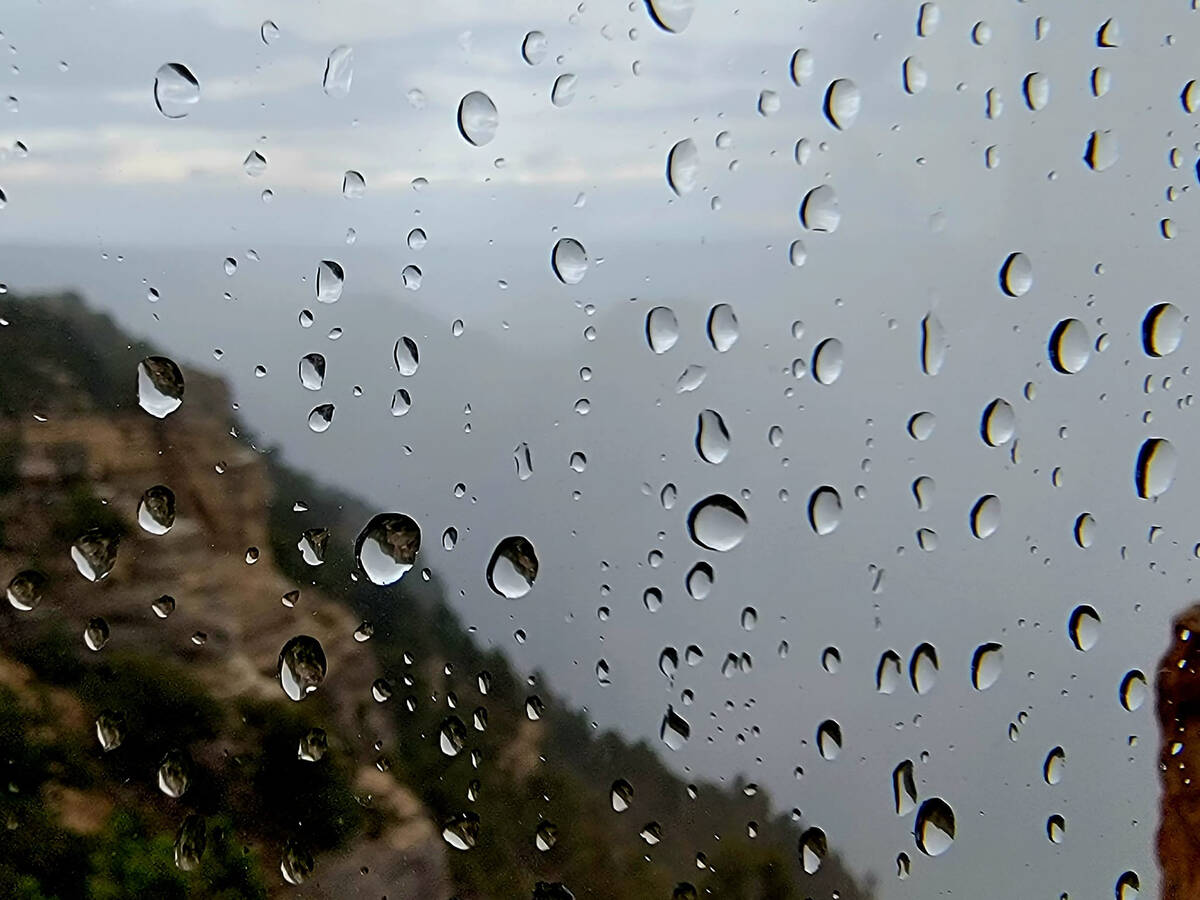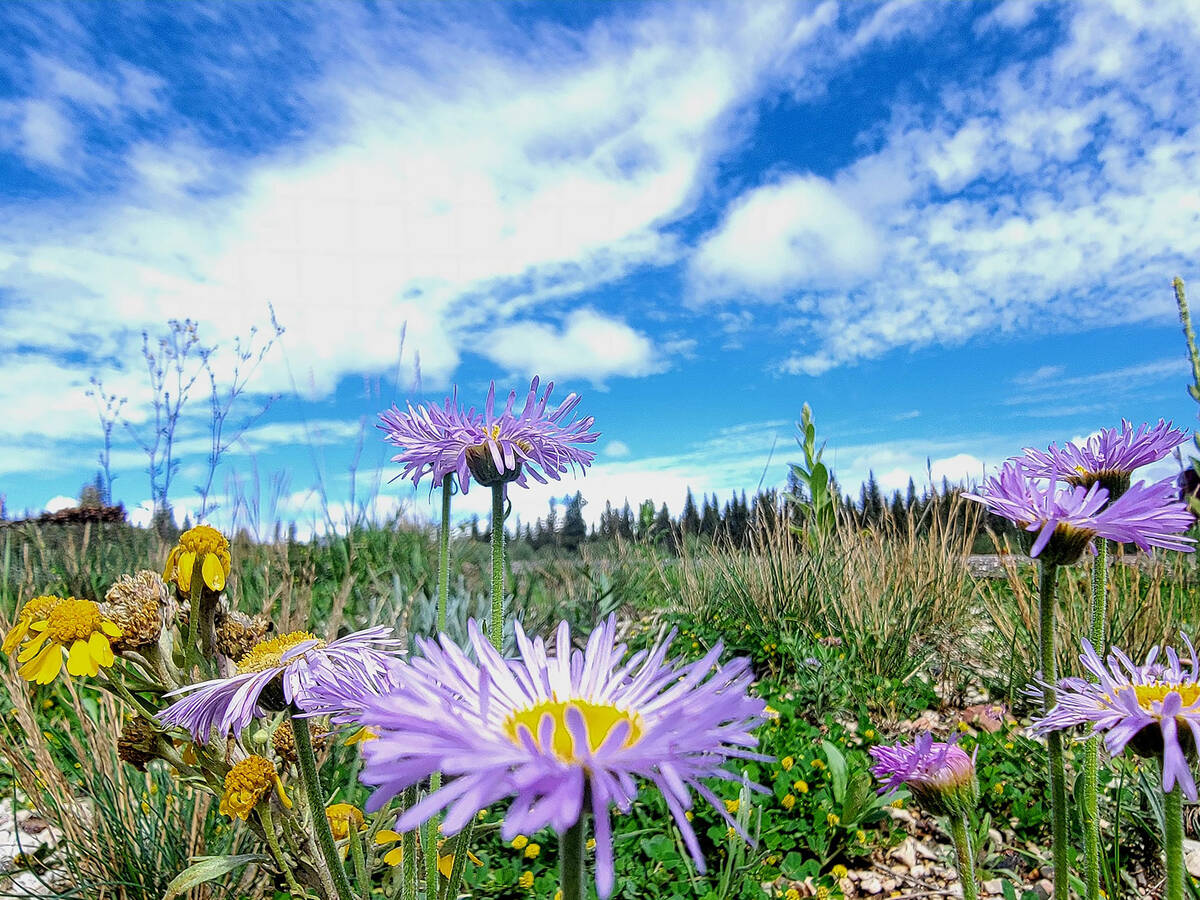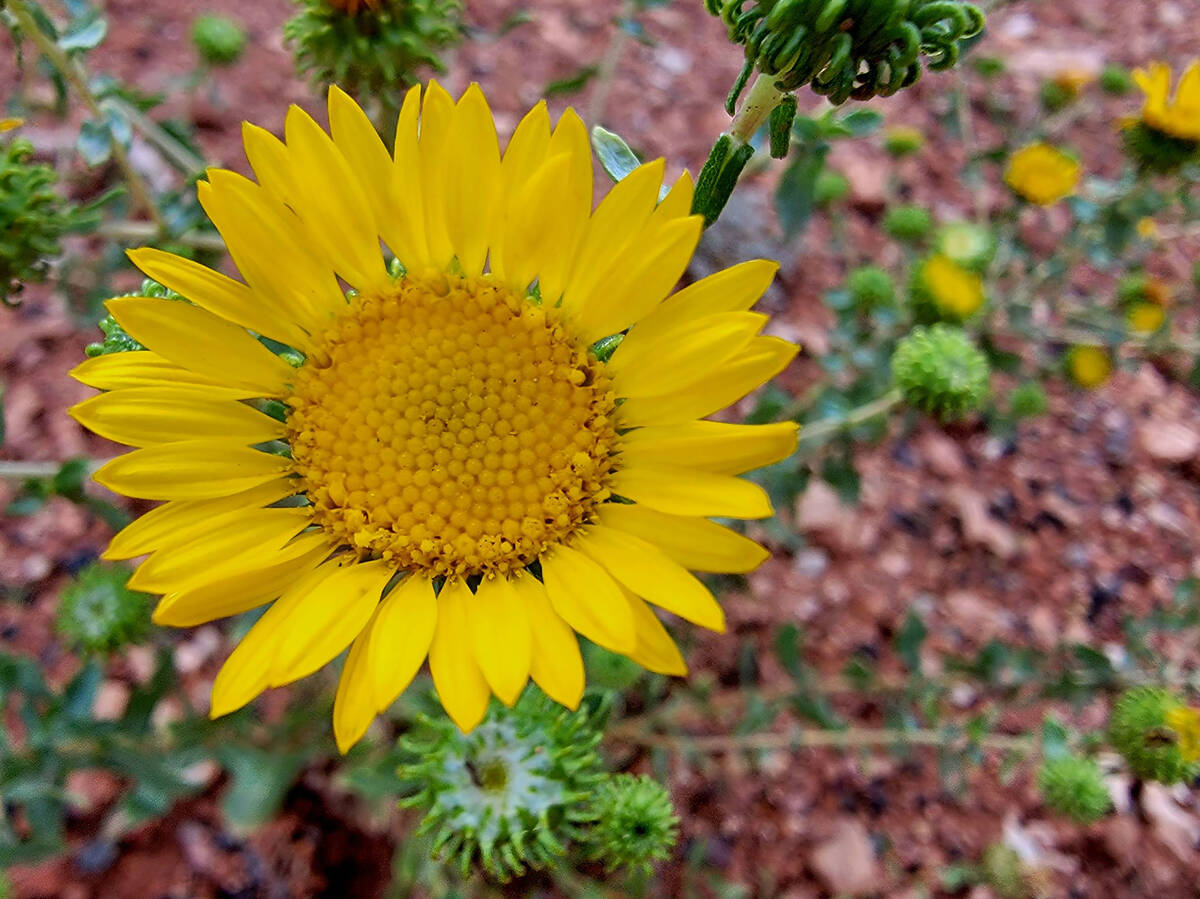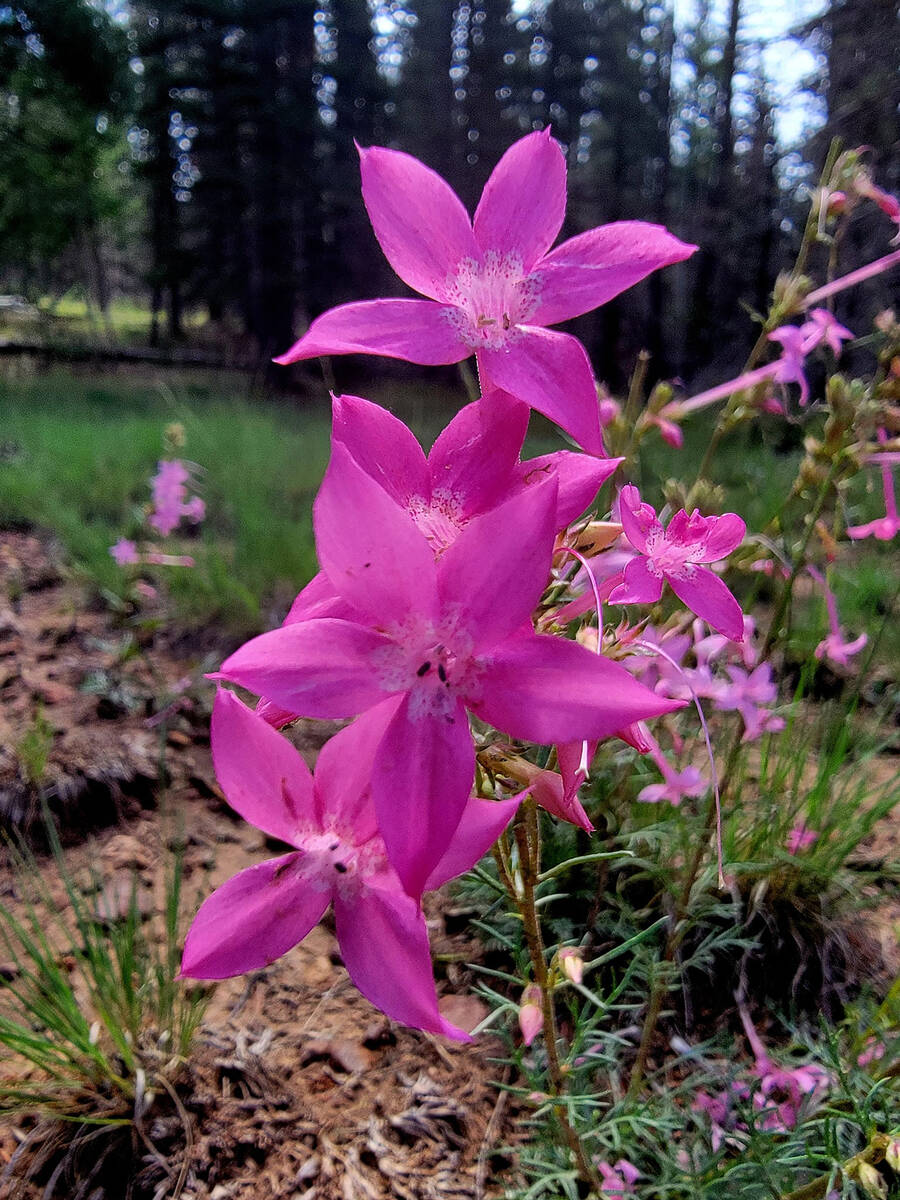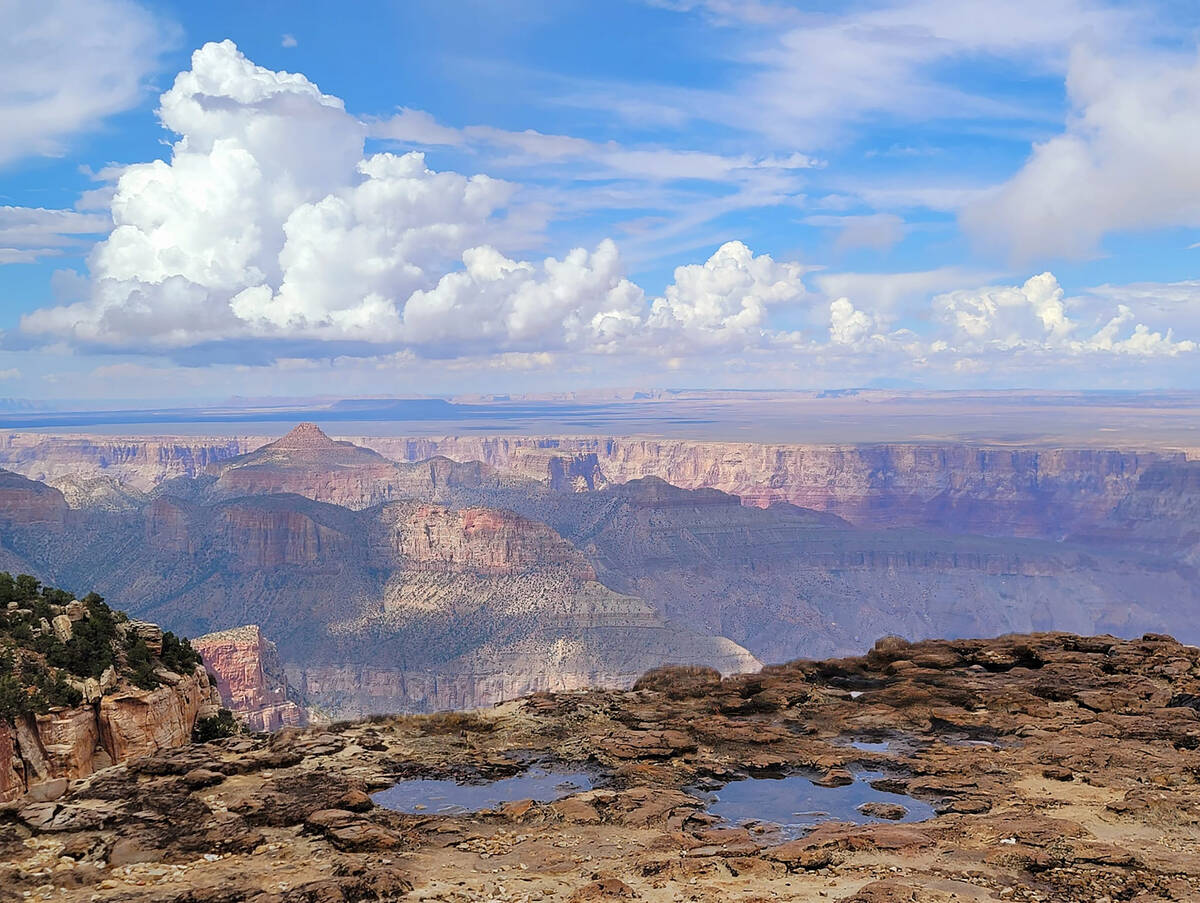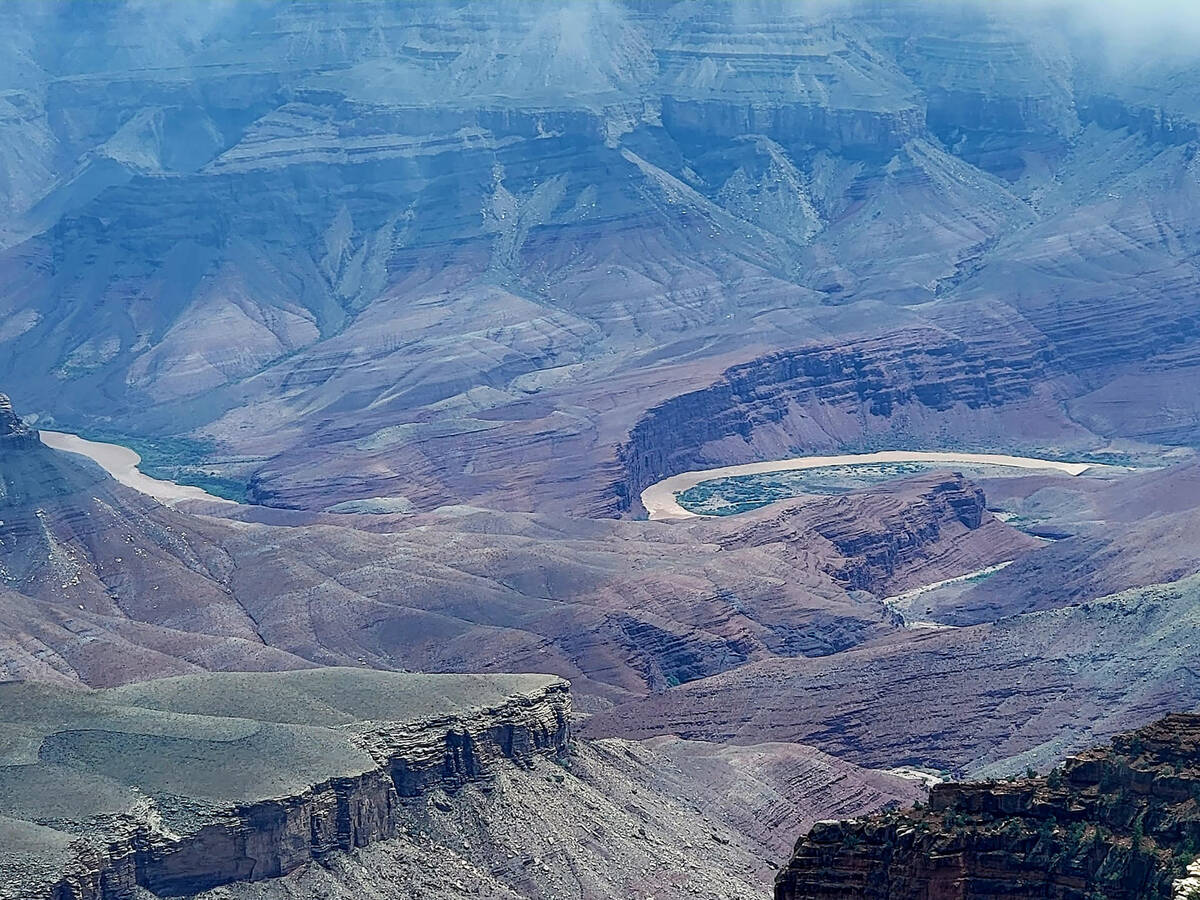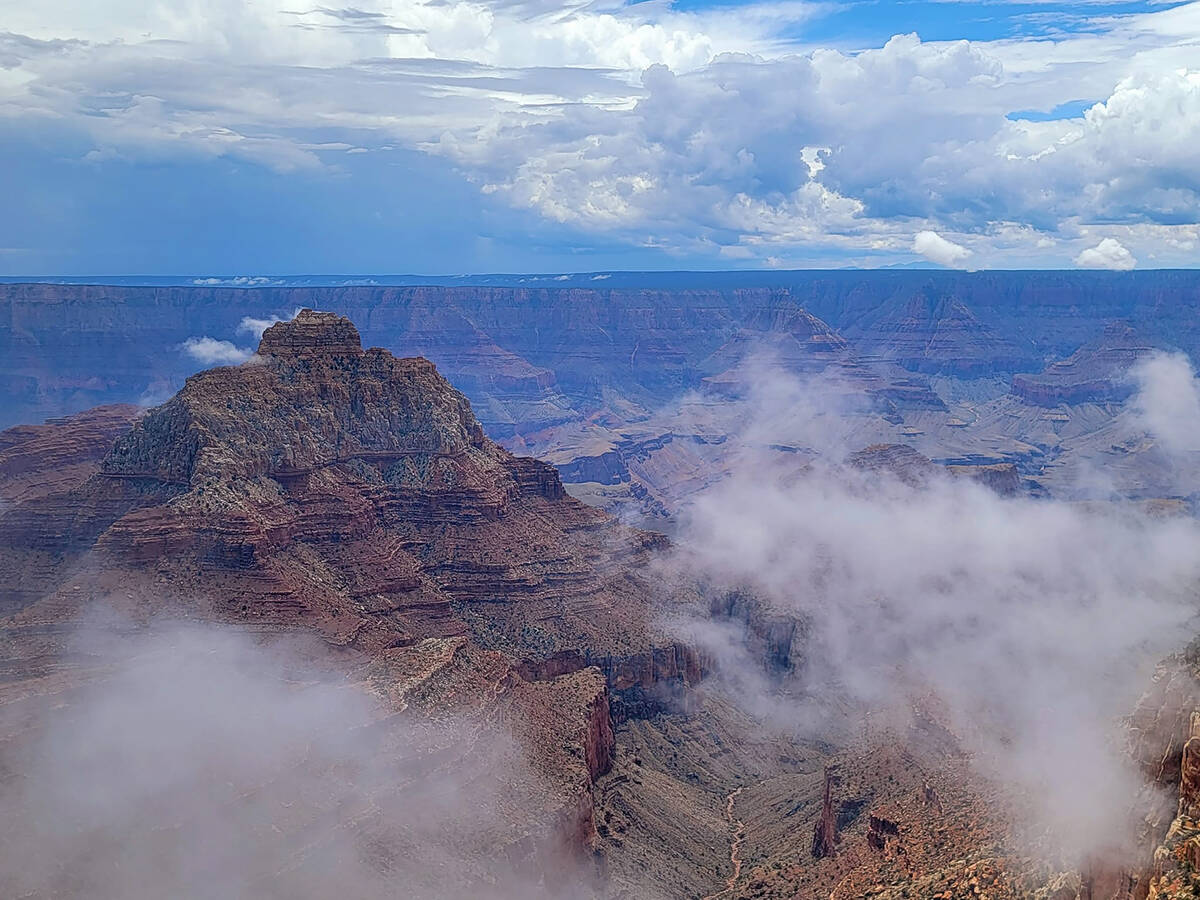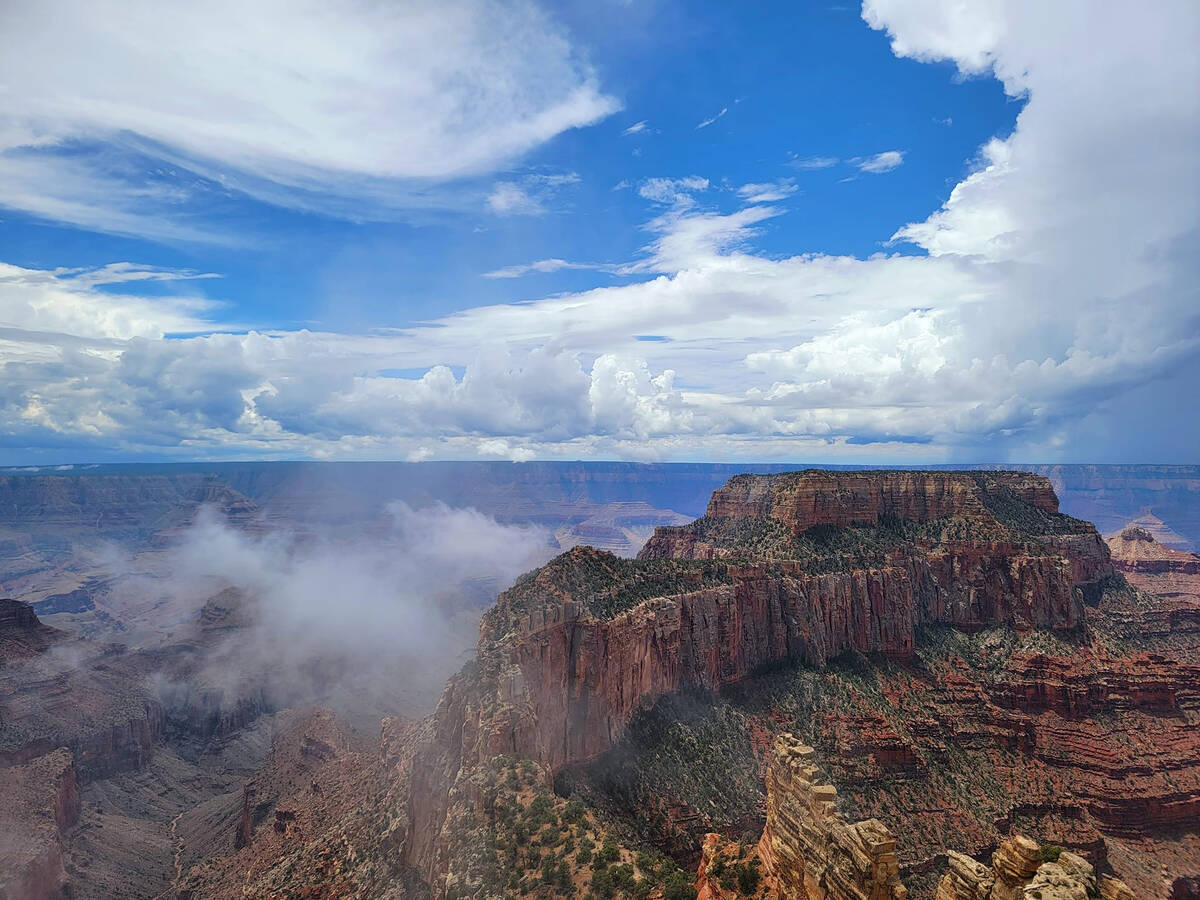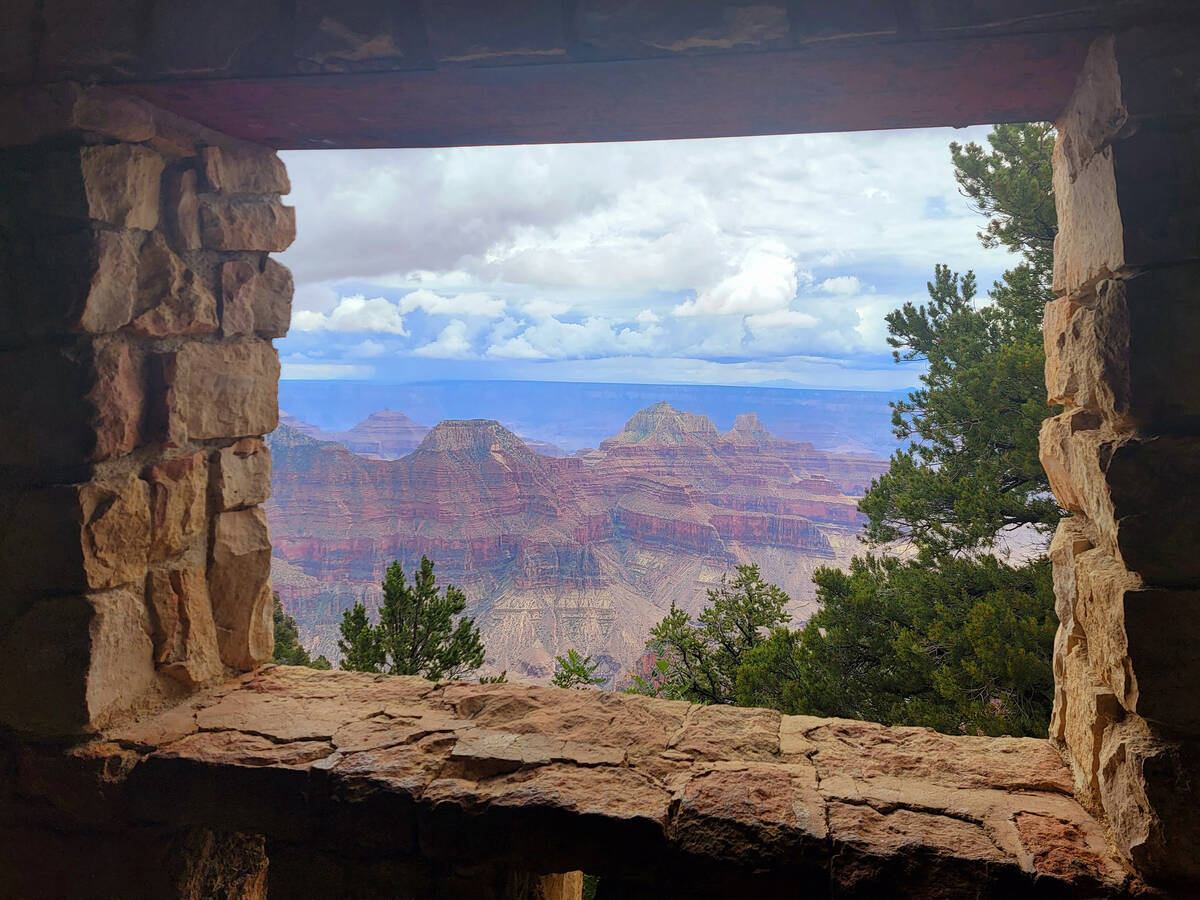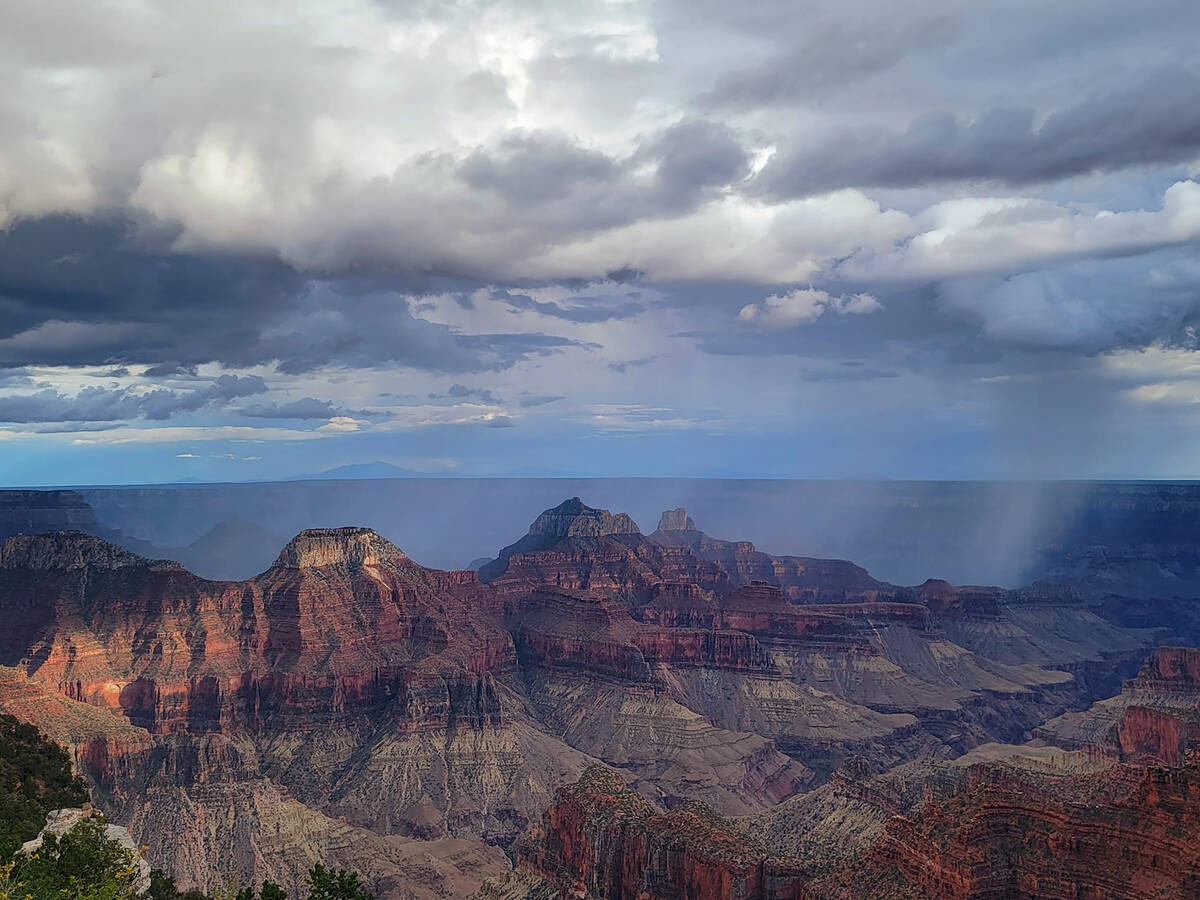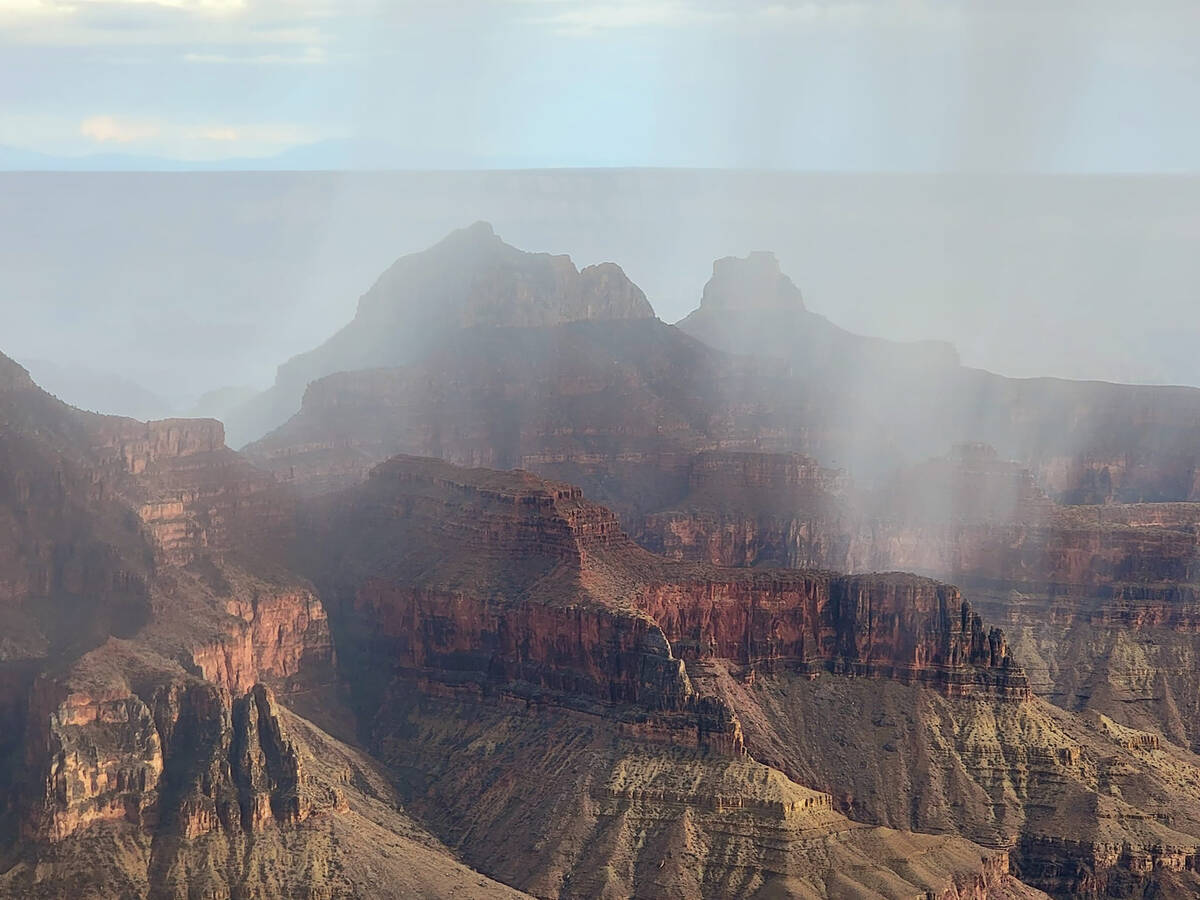A cooler, less crowded way to visit Grand Canyon — PHOTOS
Wildflowers bloom vibrantly and clouds build dramatically in July at the Grand Canyon’s North Rim, complementing the destination’s geologic splendor.
While a drive to the South Rim takes less time from Las Vegas and ends with more lodging and dining options, the North Rim has cooler temperatures, much smaller crowds and a more peaceful vibe. Several hiking trails and viewpoints await those who make this journey and wish to get some exercise as they explore one of the world’s natural wonders.
The 265-mile trip to the North Rim from Southern Nevada takes about 4½ hours along Interstate 15 and then Utah and Arizona highways meandering east before a final drop south on Arizona Route 67.
Along roads approaching the park and within its boundaries, hot pink skyrockets, lavender asters, bright yellow daisies, red-orange Indian paintbrush and purple-blue penstemon mix together in meadows and on trailsides. Wildflowers continue blooming in July at the North Rim in part because the elevation is above 8,000 feet, about 1,000 feet higher than the elevation of its warmer South Rim counterpart.
The North Rim also benefits from more precipitation, including during the Southwest’s monsoon season in July, August and early September. While summer storms can be dangerous with threats of lightning and flash flooding, much of the monsoonal activity is short-lived with veils of light rain and patches of clouds bumping up against rock formations in the canyon. Clouds above the rim can grow thousands of feet high or decorate the blue sky with imaginatively painted strokes and flourishes. Visitors can take in such mesmerizing scenes while relaxing in Adirondack chairs on the deck of the lodge (prickly pear margarita in hand, optional). Other times, monsoon rains pour down, and visitors seek shelter inside the lodge.
In addition to warning about the dangers of hiking in summer heat, the National Park Service recommends keeping close tabs on the summer weather and taking precautions during thunderstorms and heavy rains. Official advice for severe storms includes: “Go to low-lying areas away from cliff edges, lone trees, poles and metal objects. Make sure the area is not subject to flash floods. Do not seek shelter in caves or alcoves.”
Picking paths
Because trails in summer at the North Rim are filled with wildflowers, occasional animal sightings and breathtaking views of ancient rocks and dramatic weather, choosing paths to step onto and get some exercise may prove difficult as there are so many good options. The trails mentioned here are above the canyon’s rim, where elevations are higher and temperatures cooler.
Transept Trail: Many visitors start their North Rim time at the lodge and visitor center, so the Transept Trail is a logical extension of any first-timer’s overview. It’s an easy 4-mile round-trip hike along the rim that leads visitors from the lodge to epic views of a side canyon and introduces them to the ponderosa pine forest that provides ample shade. Just hiking a mile of the Transept Trail and turning around will give visitors a sense of the grandeur that will accompany them throughout their North Rim stay.
Another easy, introductory walk close to the lodge is to Bright Angel Point, but that path is currently closed for repairs.
Widforss Trail: The trailhead for this moderately challenging hike is found off Arizona Route 67 about a mile south of the turnoff to scenic Cape Royal Road. The round-trip hike is about 10 miles and leads to a stunning Grand Canyon overlook. The start of the hike follows the canyon rim, and much of the rest of the walk is past meadows and through forests of ponderosa pine, aspen, Englemann and blue spruce and white pine.
Hikers don’t need to commit to the 10 miles; they can trek as far as they want before turning around to head back. A National Park Service brochure includes numbered highlights for the first 2½ miles of the trail, named in honor of Gunnar Widforss, an early 20th-century artist whose watercolors won acclaim for their geologic detail.
Cape Final Trail: This easy path begins in ponderosa forest not far from the end of the scenic Cape Royal Road. A dry dirt trail and towering ponderosas make up much of the scenery on this 4-mile round-trip hike, but clumps of purple lupine share soil with mixed patches of wildflowers that draw in butterflies. Just as hikers begin wondering when the trail will end, there’s an opportunity to step out on a flat, rock stage to appreciate incomparable — and at-first-nerve-wracking — views of the canyon below and Painted Desert beyond. Turning around early on this trail wouldn’t make sense. The jaw-dropping vistas come without guardrails at Cape Final.
Cape Royal Road Overlooks: The drive itself, and every stop along this scenic way, is worthwhile. Most stops require a bit of walking to reach the best vantage points (several have guardrails). The paved road ends with a parking lot that provides access to some of the North Rim’s greatest hits, including spots where Angels Window and the Colorado River come into view. A four-tenths-of-a-mile paved walking trail leads to Cape Royal, where visitors enjoy commanding views of the canyon, including the closest available looks at the Wotans Throne and Vishnu Temple formations. Between Cape Royal and the parking lot, a short offshoot from the main trail leads along a narrow strip of rock jutting into the canyon.
Visitors who make that choice will be walking directly above Angels Window and out to a precipice with canyon drop-offs on three sides (guardrails included but courage and common sense still required).
Another must-stop on Cape Royal Road is Point Imperial, at 8,803 feet the highest overlook in Grand Canyon National Park. Summer rains deepen the red shades on formations such as Mount Hayden and greens of the pines and spruces. Vistas from the sometimes windy perch of Point Imperial are expansive and include the Grand Canyon’s eastern stretches.
Making a North Rim plan
On average, the North Rim gets about 10 percent of the South Rim's annual visitor volume. A major reason is that the North Rim isn't surrounded by development. The South Rim has multiple hotels inside the park and more lodging options just outside its main entrance gate. Grand Canyon Lodge-North Rim has the only rooms available inside the park, mostly rustic cabins.
Jacob Lake Inn is 44 miles from the North Rim visitor center. Kanab, Utah, is about 80 miles away and has several lodging and dining options. Camping in designated spots requires a reservation inside the park, and other campsites are available outside park boundaries.
Dining options are also lean. Grand Canyon Lodge-North Rim has a dining room with sublime views of the canyon (reservations recommended), as well as a deli and a saloon. Jacob Lake Inn has a restaurant and an inspired variety of delicious cookies for sale. North Rim visitors who pack plenty of items for picnic lunches and quick breakfasts will save on stress and costs.
The National Park Service shares information about practical matters, including alerts and closures, and scientific knowledge on its website.



